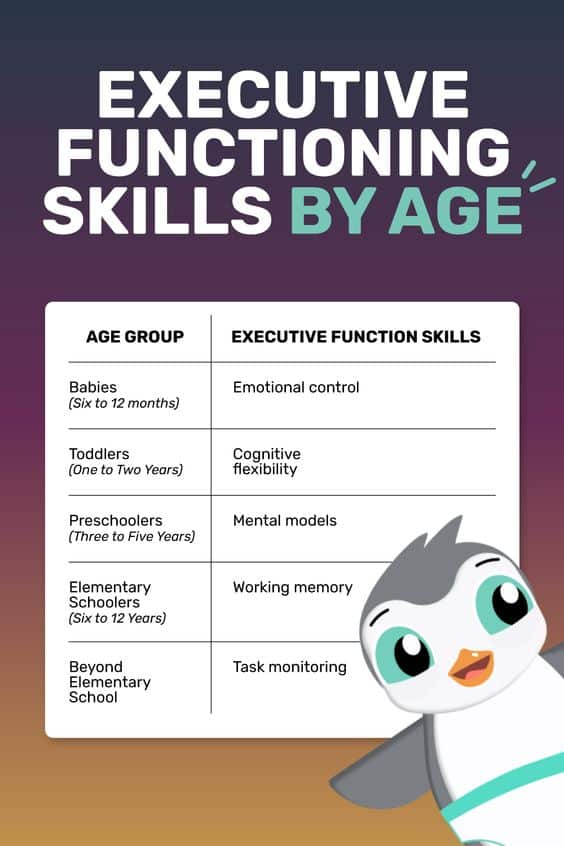Six is a magical age when your child begins to blossom both socially and emotionally. Yet, things can get challenging for parents trying to understand and support their child’s growth. In this blog, we’ll explore emotional development in 6 year olds and reveal actionable tips for parents guiding their neurodivergent kids and kids with thinking and learning differences through this transformative phase.
Table of Contents
The Emotional Adventure Awaits
First and foremost, six-year-olds are on an emotional adventure. They experience a whole range of feelings at this age – from joy to frustration. This emotional journey is a normal part of their development and reflects changes in how they express and manage their emotions. Below, we’ve listed the key emotional milestones to anticipate:
- Increased empathy and recognizing emotions in others
- Understanding the concept of fairness
- Better emotional regulation, but tantrums may still occur
- Desire to be pleasing to others and be seen as “good” or “grown-up”
- Fear of the dark, monsters, school performance, and social rejection
- Emergence of competitive spirit and jealousy among peers
It’s crucial to remember that each child’s emotional development is unique, and they may reach these milestones at different times.

Read more: Chore Charts for 6 Year Olds
Supporting Emotional Growth in Neurodivergent Kids
For neurodivergent kids or kids with thinking and learning differences, emotional development can be more complex, and they might not follow the same path as their neurotypical peers. Parents often need to apply tailored strategies to ensure proper emotional support:
1. Encourage open conversations about emotions
Help your child understand that it’s essential to talk about their emotions. Use story-time or bedtime talks to discuss various emotions, model appropriate ways to express feelings, and create a safe and open space allowing them to freely talk about their experiences. In essence, make talking about emotions a commonplace activity.
2. Utilize visual aids for emotional understanding
For some kids, especially those with autism or ADHD, recognizing emotions can be a challenge. Visual aids like emotion charts, emojis, or flashcards can be helpful in identifying and differentiating emotions. By using these tools, you build a strong foundation for improving their emotional understanding and expression.
Tools and Strategies to Boost Emotional Development
To support emotional development in 6 year olds, it’s essential to provide age-appropriate and adaptable tools and strategies. Here are some ideas to promote emotional growth:
1. Teach emotional literacy through engaging activities
Reading books, playing games or watching movies with strong emotional themes can help kids build their emotional vocabulary and understanding. Encourage conversations about emotions during these activities to help your child practice recognizing and managing feelings.
2. Nurture problem-solving skills and resilience
Guide your child in brainstorming solutions and identifying strategies they can use to cope with their emotions during challenging times. This follows the principle “if at first you don’t succeed, try, try, again.” Emphasize the importance of learning from failures and bouncing back after setbacks.

Read more: Social Emotional Development Milestones
3. Foster social connections and friendships
Maintaining strong, healthy relationships with peers is critical for emotional development. Encourage your child to participate in social activities and interact with other kids, offering support and guidance as needed. This interaction helps neurodivergent kids and kids with special needs practice social skills and grow emotionally.
| Tips for Fostering Emotional Development |
|---|
| Encourage open conversations about emotions |
| Use visual aids for emotional understanding |
| Engage in activities that teach emotional literacy |
| Nurture problem-solving skills and resilience |
| Foster social connections and friendships |
Goally | Apps To Support Child Development
Looking for fun ways to help your child learn life skills? Try Goally! The Goally tablet comes with award-winning learning apps and video classes to help kids develop the skills they need to become independent with FUN & evidence-based practices.

Our apps teach executive function, language, emotional regulation, finger dexterity skills, and more.
As your child develops new skills, you can increase the difficulty level of the tasks in the app to challenge and motivate them even further. This helps your child grow and progress at their own pace, while also keeping them engaged and excited about their development.

Embrace Your Child’s Emotional Journey
To wrap up, emotional development in 6 year olds is a dynamic and multifaceted process. Be fully present and embrace your child’s journey as they grow. Use the strategies outlined here to help them navigate their emotions with greater confidence. With empathy, understanding, and support, you can foster strong emotional skills that set the foundation for a lifetime of personal growth and healthy relationships.
This post was originally published on 05/28/2023. It was updated on 08/10/2023.

Goally
We help parents teach their kids life skills, like doing bedtime and morning independently. Backed by science, we incorporate evidence-based practices and expert-informed designs in all of our apps and content.






